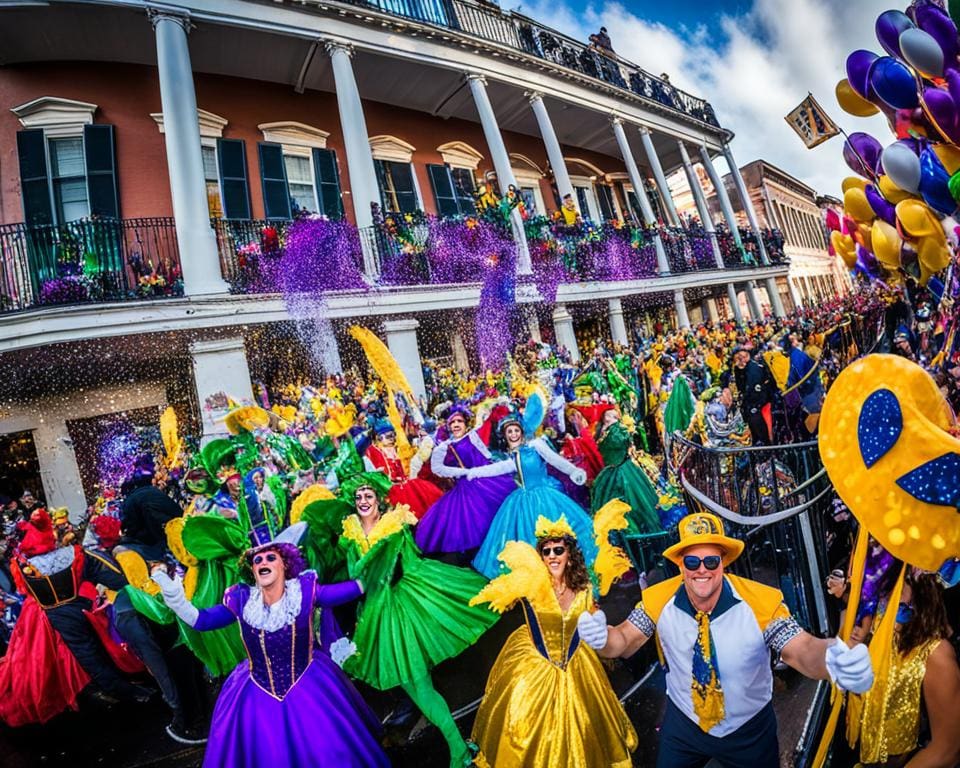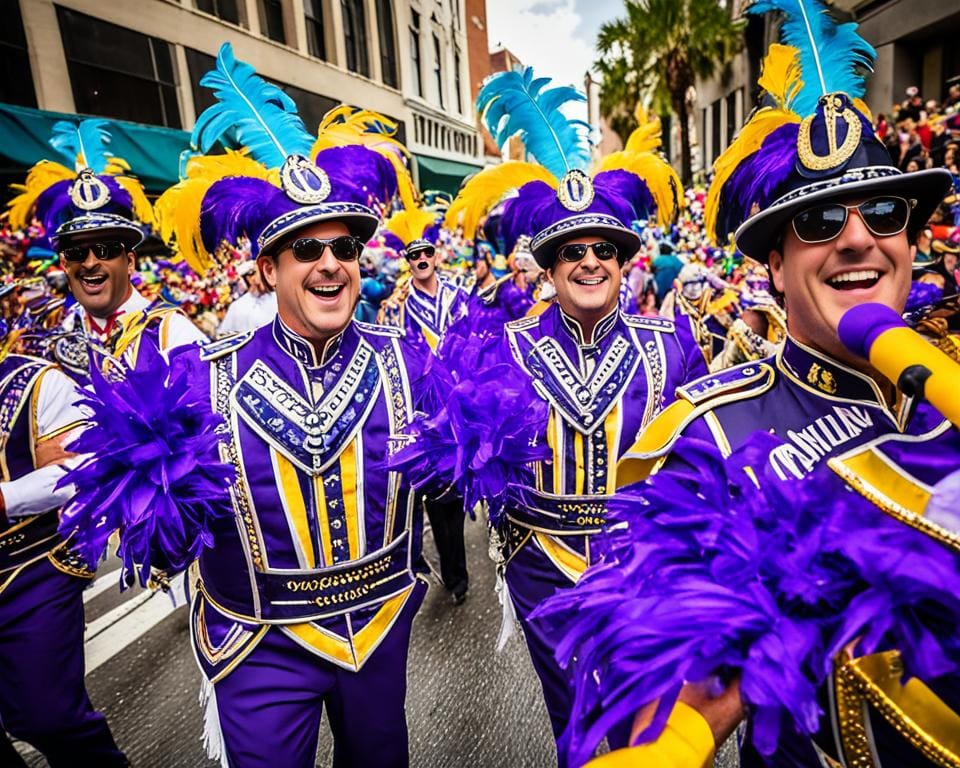Mardi Gras means “Fat Tuesday” in French. It’s a major event in New Orleans. This festival happens before Lent and brings millions of visitors every year. The next one is on February 28th, 2025. It’s famous for its mix of culture, lively parades, and fun parties.
The celebration starts on Twelfth Night, January 6th, and goes on for weeks. It peaks with amazing parades, especially the weekend before Fat Tuesday. There are about 80 parades. Everyone enjoys this Carnival season, eating King Cake and catching parade throws. It’s a showcase of New Orleans’ history and culture.
This guide will take you through Mardi Gras. It’s more than just a party. It’s a tradition that brings people together in a unique way.
The History of Mardi Gras in New Orleans
The vibrant History of Mardi Gras in New Orleans is full of culture and traditions. It started in 1699 with French explorer Pierre Le Moyne d’Iberville. Since then, its unique customs have become core to the festival’s spirit.
Origins and Early Traditions
The first Mardi Gras was in 1703 at Fort Louis de la Mobile. The next year, the secret society Masque de la Mobile added masquerades. In 1857, the Mistick Krewe of Comus organized the first parade, creating a template for the celebrations we see today.
The Influence of European Roots
The European influence on Mardi Gras is significant. Traditions from France and Spain mixed with local ones, adding artistry and togetherness. The Krewe of Rex, started in 1872, introduced purple, green, and gold. These colors stand for justice, faith, and power.
Evolution of Mardi Gras Celebrations
Over time, Mardi Gras has become a huge global event. In 1875, the Mardi Gras Act made Fat Tuesday a legal holiday in Louisiana. Now, many krewes run balls and parades with throws, flambeaux carriers, and big floats. The king cake is a favorite, bringing fun for families and friends.

Mardi Gras: A Guide to New Orleans’ Biggest Celebration
The fun of Mardi Gras starts long before Fat Tuesday. It kicks off on January 6 and hits its high point on March 4, 2025. This big party has deep roots and brings to life the culture of New Orleans. Many neighborhoods join the fun. Different groups, called krewes, put together their own parades. Each one shows off local themes and stories. Mardi Gras is like a big quilt. Every float has its own tale, showing what this time means to New Orleans.
Dates and Duration of Festivities
Mardi Gras doesn’t have fixed dates. It can last from 28 to 63 days, ending on Fat Tuesday. Big parades, like Proteus on Lundi Gras, and Rex and Zulu on Fat Tuesday, bring everyone together. This period is full of traditions. The first Mardi Gras ball was in 1857, and Rex’s first parade was in 1872. It’s all about celebrating together and making memories.
Cultural Significance and Community Involvement
Mardi Gras is more than just a fun time. It’s about coming together, sharing traditions, and being creative. Groups like the Zulu Social Aid and Pleasure Club play a big part. Their parade starts at 8 a.m. on Mardi Gras Day. It has bright costumes and old traditions that honor a long history. As people from New Orleans and visitors mix, they share in a special tradition. They enjoy the joy and deep meaning that make Mardi Gras special.









